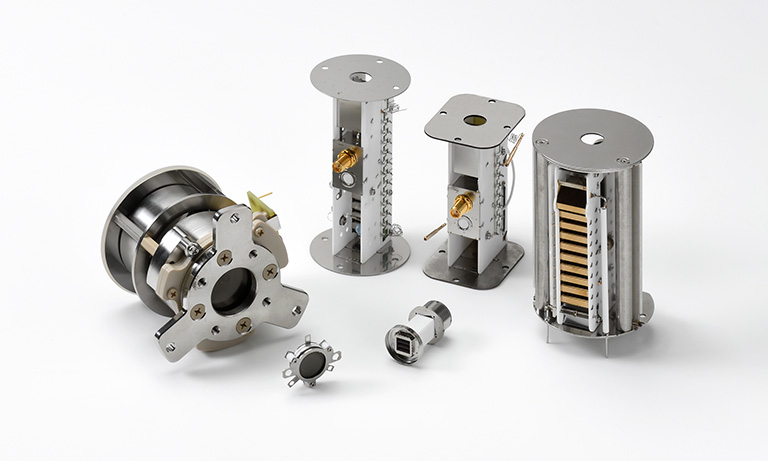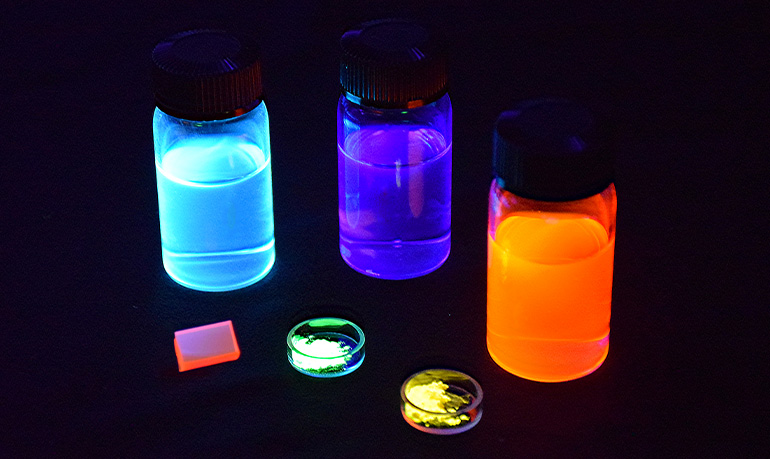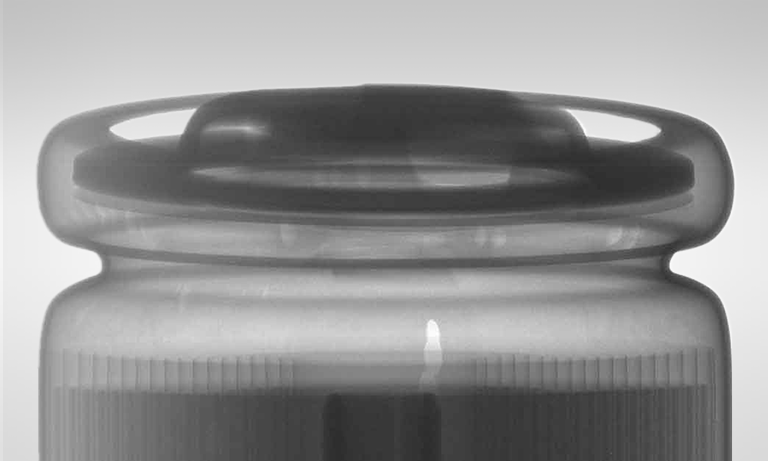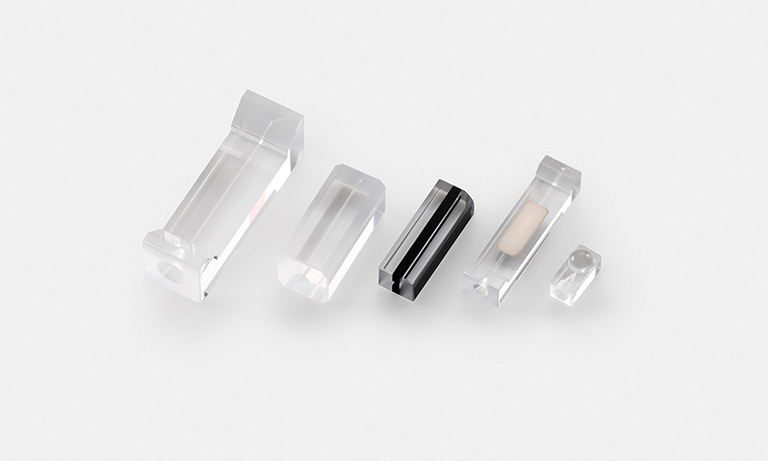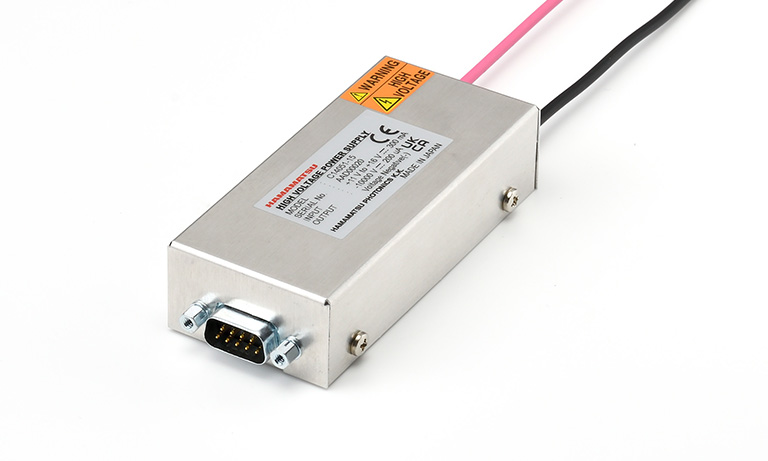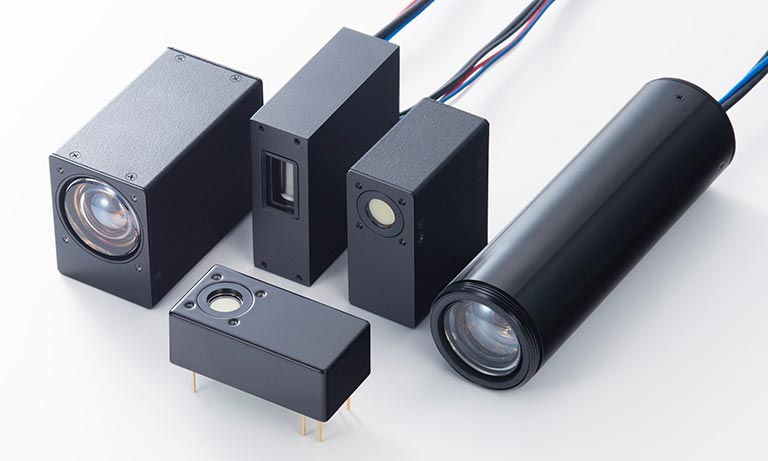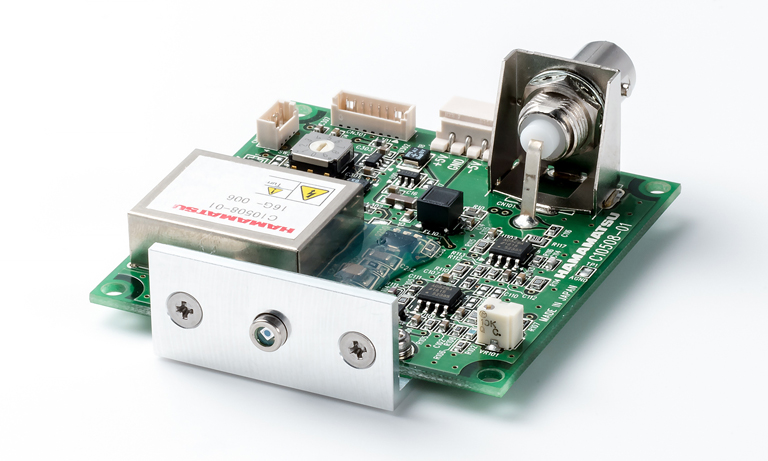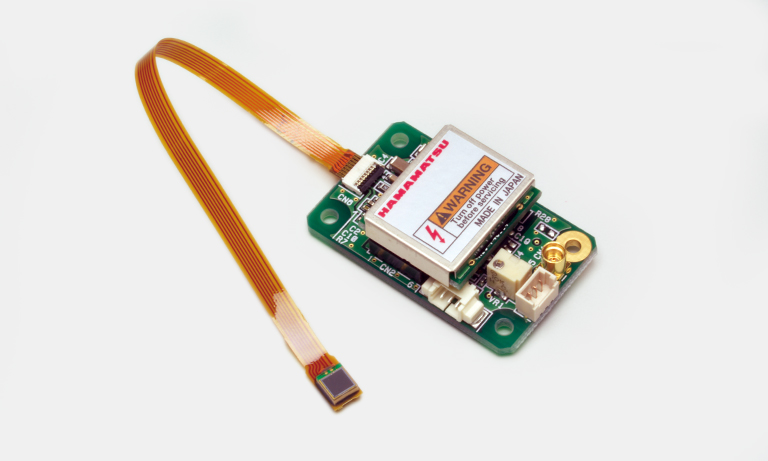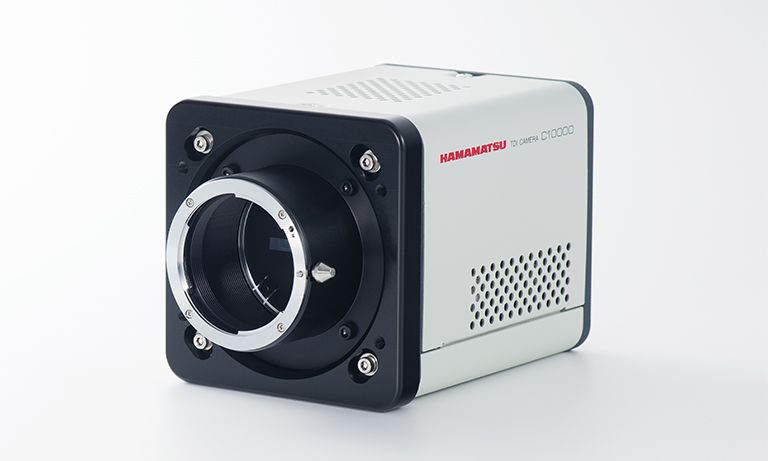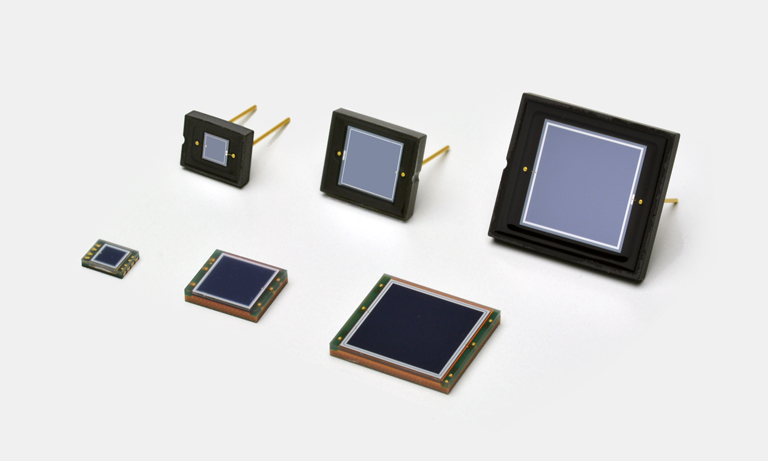United Kingdom (EN)
Select your region or country.


Flow cytometer
Flow cytometry is a technique for obtaining various information from cells by measuring the scattered light and fluorescence that are generated when the cells are irradiated with laser light. A instrument specifically designed for flow cytometry is referred to as a flow cytometer.
Flow cytometers rely on fluorescent labeling with specific antibodies to detect markers both inside and outside the cells, This allows quantitative evaluation of cell populations based on multiple parameters such as cell type, active state and cell cycle status, etc.
How a flow cytometer works
A flow cytometer consists of 3 main components: a fluidics, an optics and an electronics. Each plays a different role.
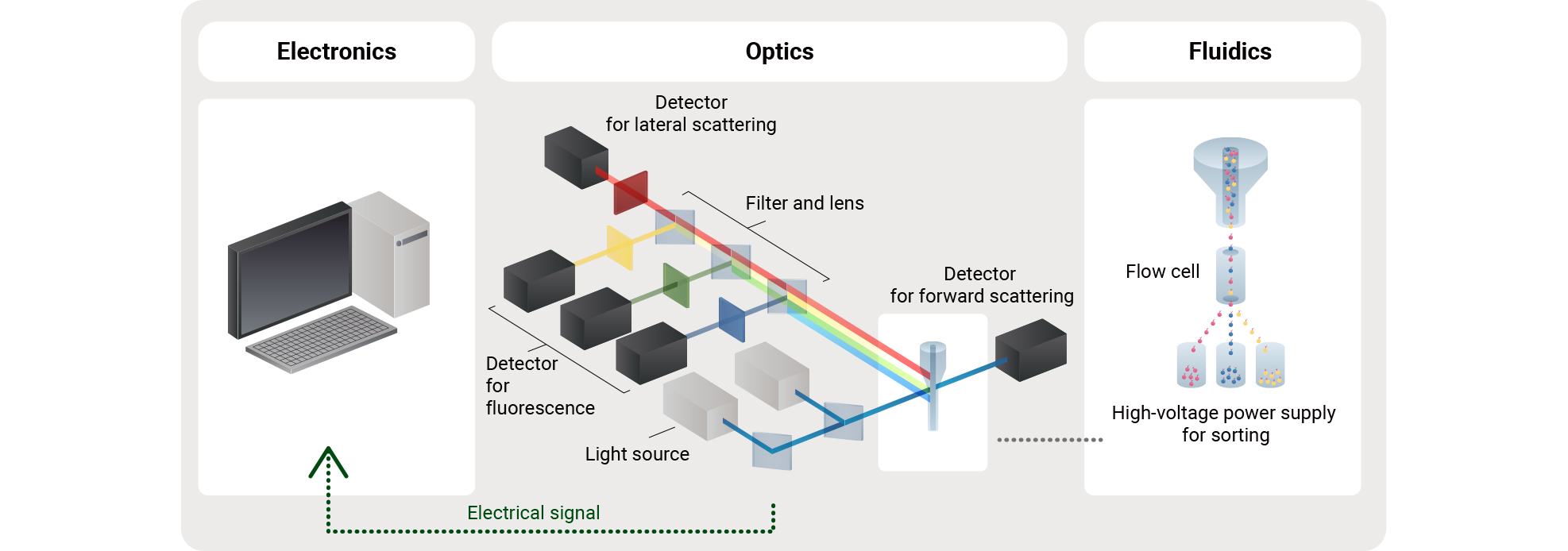
- Fluidics: Consists of tubes and glass cells through which cells and sheath fluid flow, and requires high accuracy both in the cell flow amount and speed.
- Optics: Consists of light sources for excitation of cells, and detectors for detecting fluorescence and scattered light from cells, lenses and filters. Each device must have high stability and sensitivity to achieve highly accurate cell analysis.
- Electronics: Receives electrical signals output from the optical system, processes the data, and analyzes the measurement results.
Basic principle
When a suspension of cells labeled with a fluorescent dye is poured into a thin tube, the cells move through the tube at certain intervals.
The cells are then irradiated with laser beams. The fluorescence emitted from the fluorescent substance and the light scattered by the cells are detected and monitored by the photodetectors.
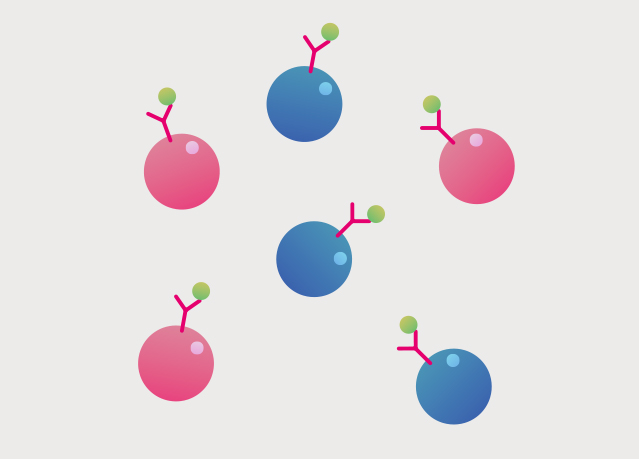
1. Target cells are fluorescently labeled.
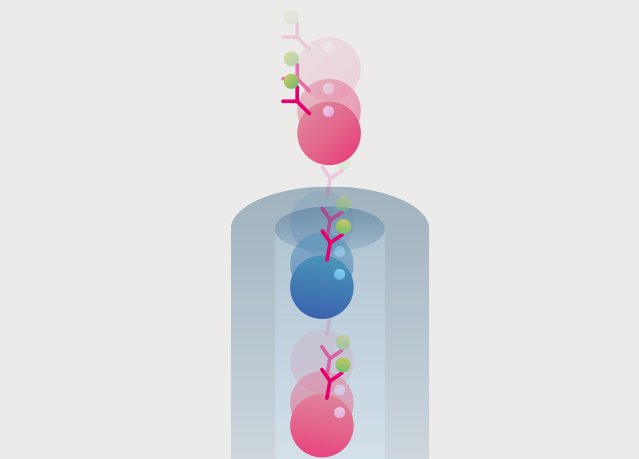
2. Cells are poured into flow path system and move through tube at fixed intervals.
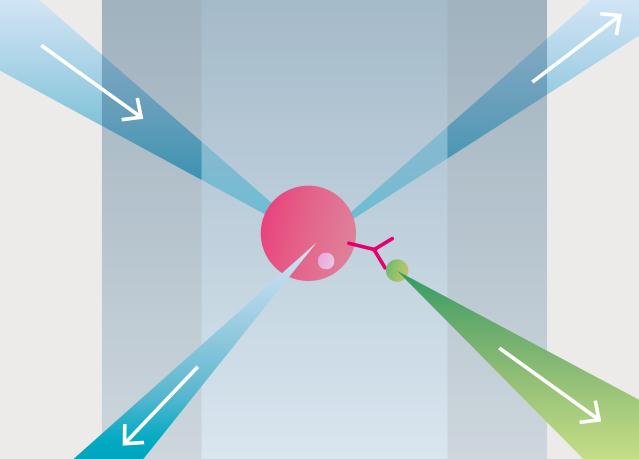
3. Cells are irradiated with laser beams.
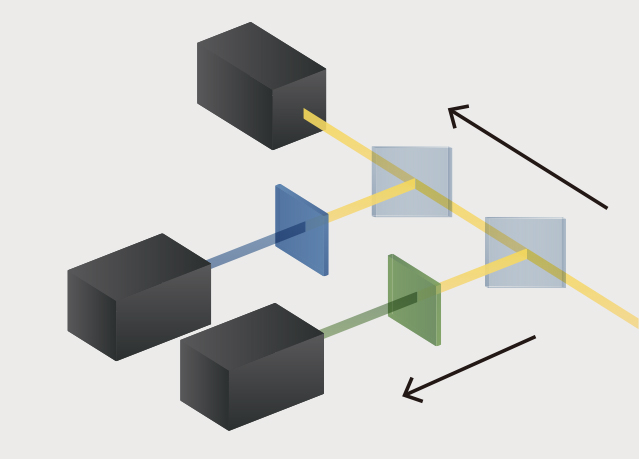
4. Light is detected via the optical system.
Technology trend: Multicolor analysis
To obtain even more information that has not been available up to now in flow cytometry, it is necessary to stain cells with multiple types of markers. In measurements that precisely distinguish between various combinations of markers; multicolor analysis utilizing lasers and detectors for different wavelengths plays an active role.
Conventional fluorescence detection measurements are usually limited to the wavelength range where fluorescence intensity is high. However, recent advances in measurement and analysis techniques allow us to obtain fluorescence information across the entire spectrum. This improves the accuracy of multicolor analysis and raises the bar in cell analysis to a more advanced level.
Fluorescence spillover and compensation
During multicolor analysis, since multiple fluorescent dyes are used in the measurement, fluorescence from different wavelengths might overlap among the measurement items, causing interference due to light leaking into channels not originally intended for measurement. The technique to correct this problem is called compensation. To apply compensation, the fluorescence overlap between the target fluorochromes must be predicted and subtracted from the signal. The accuracy of this compensation processing relies to a large extent on the sensitivity characteristics of detectors in the flow cytometer.
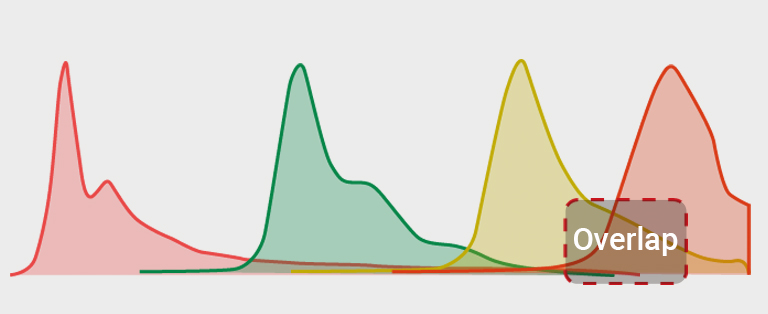
Compensation technology that corrects for overlap between measured signal.
Supporting multicolor analysis
Multicolor analysis in flow cytometry now requires versatile detectors with higher performance.
To obtain a large volume of accurate data, the detection wavelength range must be extended to the near-infrared region This means that the detectors need to have higher sensitivity in the near infrared region.
To meet these demands, Hamamatsu is working hard to improve the performance of its detectors used in multicolor analysis.
As one example, we are constantly improving the performance of photomultiplier tube modules utilizing crystalline materials in the photocathode and have achieved both higher sensitivity and extended near-infrared sensitivity compared to conventional photomultiplier tubes utilizing alkali materials in the photocathode.
We offer a lineup of photomultiplier tubes having multiple detection channels in a single unit and also provide easy-to-use modules with functions well-suited for multicolor analysis.
Photomultiplier tube quantum efficiency comparison
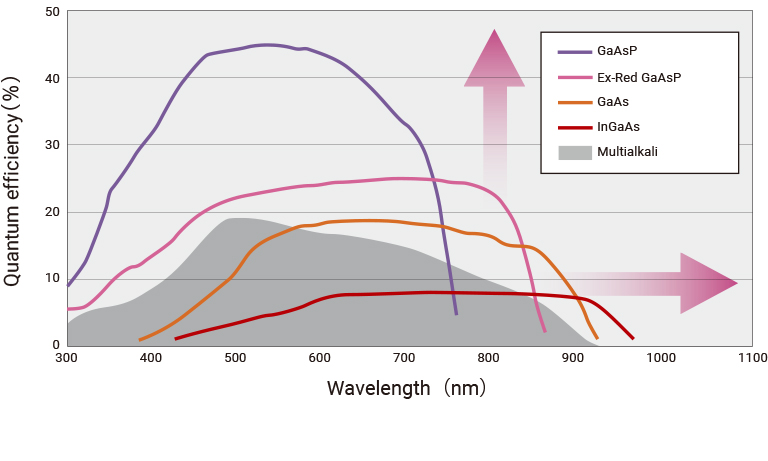
Related Products
Devices for flow path system
These are glass cells designed to install into flow path systems. Their high dimensional accuracy contributes to precise control of flow speed and flow rate.
This power supply provides the required voltage to cell sorters. Its highly regulated voltage output contributes to highly accurate cell sorting.
Devices for optical system
We provide photomultiplier tube modules with higher sensitivity extending to the near-infrared region to meet needs stemming from recent advances in multicolor analysis.
Users can select from various models such as those with a thermoelectric cooler according to their particular application.
APD modules are high sensitivity, fast response photodetector modules with a built-in Si APD (silicon avalanche photodiode). APD features internal signal multiplication (about several hundred times) called avalanche multiplication and so is ideal for light measurements requiring high sensitivity and fast response.
MPPC modules are photon counting modules with built-in MPPCs. They incorporate an MPPC, I/V converter, and power supply, making them easy to use.
The MPPC features high gain, high photon detection efficiency, and wide dynamic range, so it can obtain high S/N characteristics even for high-speed, weak signals.
We provide TDI cameras with features optimized for imaging flow cytometry. Flexible customization and options are also available.
Photodiodes that can detect everything from ultraviolet light to visible light with extremely high quantum efficiency. CAN package, surface mount type, etc. are available.
- Confirmation
-
It looks like you're in the . If this is not your location, please select the correct region or country below.
You're headed to Hamamatsu Photonics website for GB (English). If you want to view an other country's site, the optimized information will be provided by selecting options below.
In order to use this website comfortably, we use cookies. For cookie details please see our cookie policy.
- Cookie Policy
-
This website or its third-party tools use cookies, which are necessary to its functioning and required to achieve the purposes illustrated in this cookie policy. By closing the cookie warning banner, scrolling the page, clicking a link or continuing to browse otherwise, you agree to the use of cookies.
Hamamatsu uses cookies in order to enhance your experience on our website and ensure that our website functions.
You can visit this page at any time to learn more about cookies, get the most up to date information on how we use cookies and manage your cookie settings. We will not use cookies for any purpose other than the ones stated, but please note that we reserve the right to update our cookies.
1. What are cookies?
For modern websites to work according to visitor’s expectations, they need to collect certain basic information about visitors. To do this, a site will create small text files which are placed on visitor’s devices (computer or mobile) - these files are known as cookies when you access a website. Cookies are used in order to make websites function and work efficiently. Cookies are uniquely assigned to each visitor and can only be read by a web server in the domain that issued the cookie to the visitor. Cookies cannot be used to run programs or deliver viruses to a visitor’s device.
Cookies do various jobs which make the visitor’s experience of the internet much smoother and more interactive. For instance, cookies are used to remember the visitor’s preferences on sites they visit often, to remember language preference and to help navigate between pages more efficiently. Much, though not all, of the data collected is anonymous, though some of it is designed to detect browsing patterns and approximate geographical location to improve the visitor experience.
Certain type of cookies may require the data subject’s consent before storing them on the computer.
2. What are the different types of cookies?
This website uses two types of cookies:
- First party cookies. For our website, the first party cookies are controlled and maintained by Hamamatsu. No other parties have access to these cookies.
- Third party cookies. These cookies are implemented by organizations outside Hamamatsu. We do not have access to the data in these cookies, but we use these cookies to improve the overall website experience.
3. How do we use cookies?
This website uses cookies for following purposes:
- Certain cookies are necessary for our website to function. These are strictly necessary cookies and are required to enable website access, support navigation or provide relevant content. These cookies direct you to the correct region or country, and support security and ecommerce. Strictly necessary cookies also enforce your privacy preferences. Without these strictly necessary cookies, much of our website will not function.
- Analytics cookies are used to track website usage. This data enables us to improve our website usability, performance and website administration. In our analytics cookies, we do not store any personal identifying information.
- Functionality cookies. These are used to recognize you when you return to our website. This enables us to personalize our content for you, greet you by name and remember your preferences (for example, your choice of language or region).
- These cookies record your visit to our website, the pages you have visited and the links you have followed. We will use this information to make our website and the advertising displayed on it more relevant to your interests. We may also share this information with third parties for this purpose.
Cookies help us help you. Through the use of cookies, we learn what is important to our visitors and we develop and enhance website content and functionality to support your experience. Much of our website can be accessed if cookies are disabled, however certain website functions may not work. And, we believe your current and future visits will be enhanced if cookies are enabled.
4. Which cookies do we use?
There are two ways to manage cookie preferences.
- You can set your cookie preferences on your device or in your browser.
- You can set your cookie preferences at the website level.
If you don’t want to receive cookies, you can modify your browser so that it notifies you when cookies are sent to it or you can refuse cookies altogether. You can also delete cookies that have already been set.
If you wish to restrict or block web browser cookies which are set on your device then you can do this through your browser settings; the Help function within your browser should tell you how. Alternatively, you may wish to visit www.aboutcookies.org, which contains comprehensive information on how to do this on a wide variety of desktop browsers.
5. What are Internet tags and how do we use them with cookies?
Occasionally, we may use internet tags (also known as action tags, single-pixel GIFs, clear GIFs, invisible GIFs and 1-by-1 GIFs) at this site and may deploy these tags/cookies through a third-party advertising partner or a web analytical service partner which may be located and store the respective information (including your IP-address) in a foreign country. These tags/cookies are placed on both online advertisements that bring users to this site and on different pages of this site. We use this technology to measure the visitors' responses to our sites and the effectiveness of our advertising campaigns (including how many times a page is opened and which information is consulted) as well as to evaluate your use of this website. The third-party partner or the web analytical service partner may be able to collect data about visitors to our and other sites because of these internet tags/cookies, may compose reports regarding the website’s activity for us and may provide further services which are related to the use of the website and the internet. They may provide such information to other parties if there is a legal requirement that they do so, or if they hire the other parties to process information on their behalf.
If you would like more information about web tags and cookies associated with on-line advertising or to opt-out of third-party collection of this information, please visit the Network Advertising Initiative website http://www.networkadvertising.org.
6. Analytics and Advertisement Cookies
We use third-party cookies (such as Google Analytics) to track visitors on our website, to get reports about how visitors use the website and to inform, optimize and serve ads based on someone's past visits to our website.
You may opt-out of Google Analytics cookies by the websites provided by Google:
https://tools.google.com/dlpage/gaoptout?hl=en
As provided in this Privacy Policy (Article 5), you can learn more about opt-out cookies by the website provided by Network Advertising Initiative:
http://www.networkadvertising.org
We inform you that in such case you will not be able to wholly use all functions of our website.
Close











